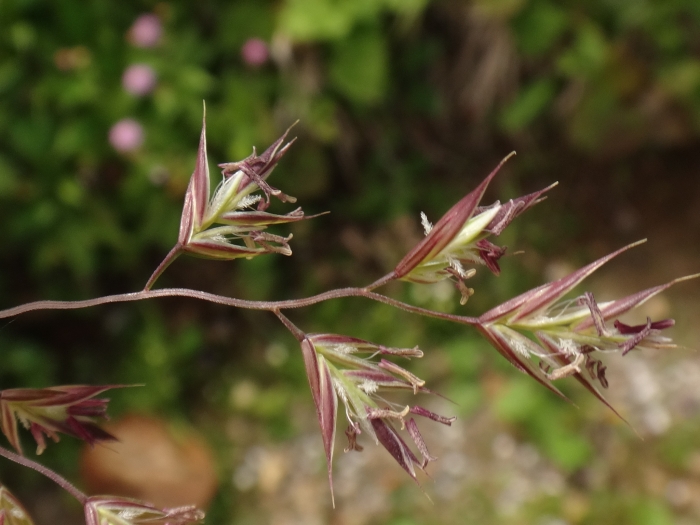Alpine Chewing’s Fescue
(Festuca nigrescens)
Alpine Chewing’s Fescue (Festuca nigrescens)
/
/

Christian Berg
CC BY 4.0
Image By:
Christian Berg
Recorded By:
Copyright:
CC BY 4.0
Copyright Notice:
Photo by: Christian Berg | License Type: CC BY 4.0 | License URL: http://creativecommons.org/licenses/by/4.0/ | Rights Holder: Christian Berg | Publisher: iNaturalist | Date Created: 2020-07-20T13:10:53-07:00 |









Estimated Native Range
Summary
Festuca nigrescens, commonly known as Alpine Chewing’s Fescue, is a perennial grass native to alpine and subalpine zones in Europe, including the Pyrenees, Alps, and Carpathians. It forms dense tufts with erect culms that can reach 12 to 35 inches in height. The leaves are fine-textured, filiform, and conduplicate, creating a fine-textured appearance. The inflorescence is an open panicle measuring 2-4 inches long, typically flowering in the late spring to early summer. The flowers are not particularly showy, but they do add a delicate texture to the plant’s profile.
Alpine Chewing’s Fescue is valued for its ability to thrive in cool, mountainous environments and its use in ecological restoration projects, especially in its native alpine habitats. It is also used in ornamental plantings for its fine foliage texture and as a low-maintenance turf alternative in cooler climates. This grass prefers well-drained soils, tolerates a range of soil types, and requires moderate watering. It is best grown in full sun to part shade. While it is generally disease-resistant, it can suffer from rust in humid conditions. Alpine Chewing’s Fescue is not known for aggressive roots or significant disease problems, making it a reliable choice for many garden settings.CC BY-SA 4.0
Alpine Chewing’s Fescue is valued for its ability to thrive in cool, mountainous environments and its use in ecological restoration projects, especially in its native alpine habitats. It is also used in ornamental plantings for its fine foliage texture and as a low-maintenance turf alternative in cooler climates. This grass prefers well-drained soils, tolerates a range of soil types, and requires moderate watering. It is best grown in full sun to part shade. While it is generally disease-resistant, it can suffer from rust in humid conditions. Alpine Chewing’s Fescue is not known for aggressive roots or significant disease problems, making it a reliable choice for many garden settings.CC BY-SA 4.0
Plant Description
- Plant Type: Grass
- Height: 1-1.5 feet
- Width: 1-1.5 feet
- Growth Rate: Moderate
- Flower Color: N/A
- Flowering Season: Summer
- Leaf Retention: Evergreen
Growth Requirements
- Sun: Full Sun, Part Shade
- Water: Medium, High
- Drainage: Medium, Fast
Common Uses
Groundcover, Low Maintenance, Rock Garden
Natural Habitat
Native to alpine and subalpine zones in Europe, including the Pyrenees, Alps, and Carpathians
Other Names
Common Names: Black Fescue
Scientific Names: , Festuca nigrescens, Festuca adfinita, Festuca alpivaga, Festuca amethystea, Festuca amethystea, Festuca caespititia, Festuca cambrica, Festuca centralis, Festuca coloratiglumis
GBIF Accepted Name: